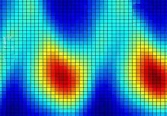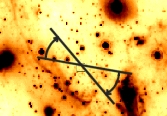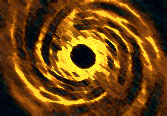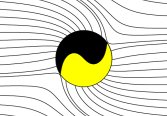
X-ray spectroscopy of active galaxies
The X-ray reflection features of irradiated accretion disks around black holesenable us to probe the effects of strong gravity and learn the black-hole properties. We investigate the reflection signs, i.e. the iron K-line and the Comptonized hump, which arise by reprocessing of radiation on the surface of an accretion disc, and how they are affected by the spin of arotating black hole.
Read More



